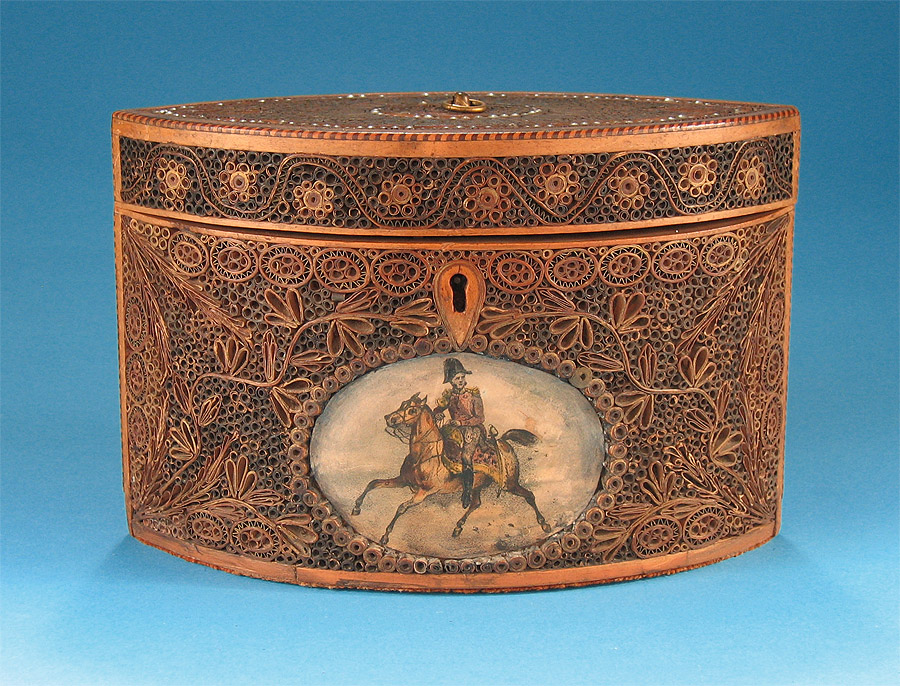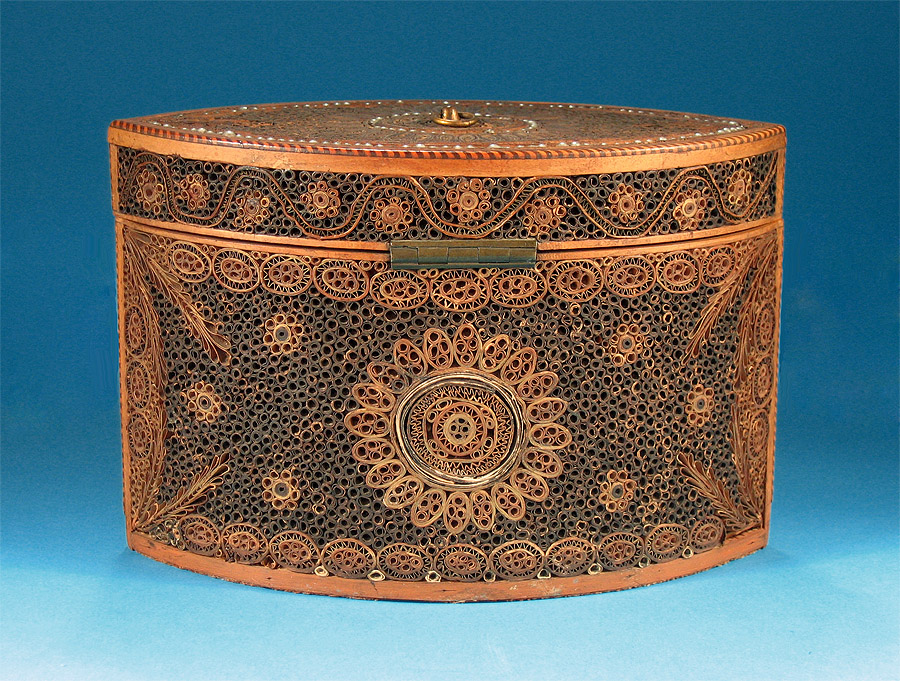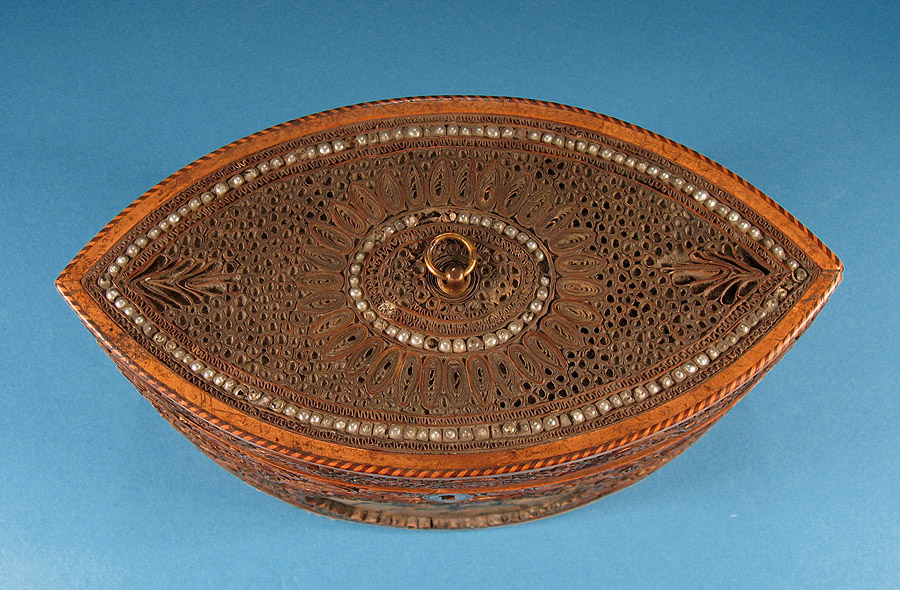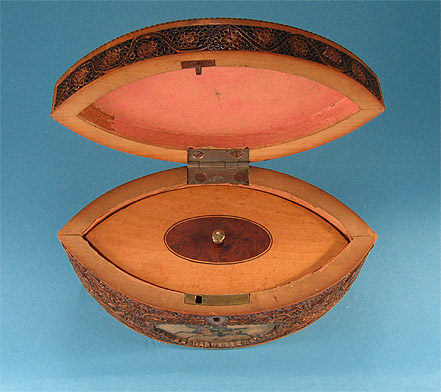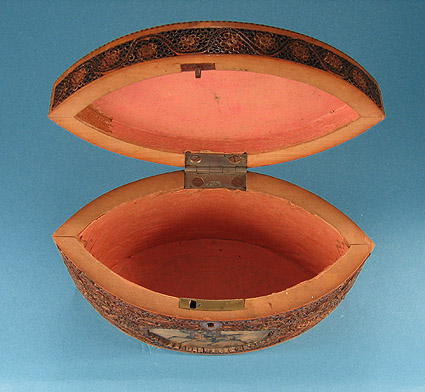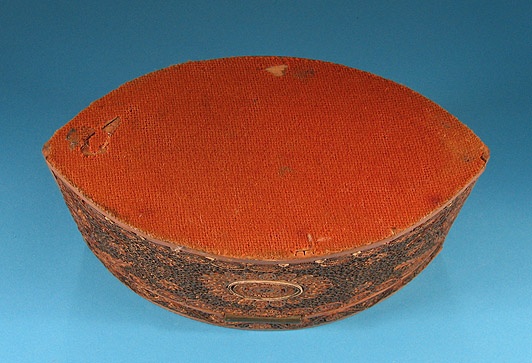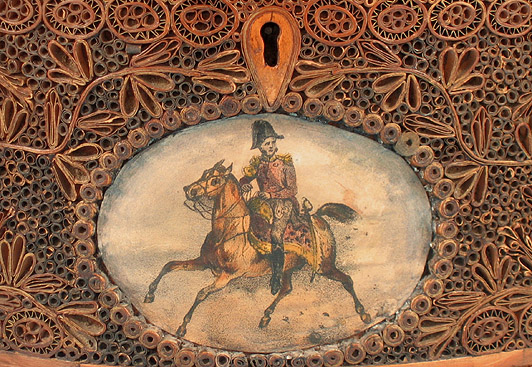|
Of navette form, the front, back and cover decorated overall with paper
scrolls in stylized floral and foliate motifs,
the front inset with a painting on leather of a Napoleonic figure on horseback,
the inlaid cover with pique work and brass loop handle,
much of the lighter scrolling with remains of gilt.
the
banding of satinwood and mahogany,
the interior retaining its original inlaid satinwood and mahogany
knopped lid
Condition: Excellent; interior paper an old replacement;
two tiny losses of paper
to the lid, several minor losses to inset pique work
5”H x 7.5"L
SOLD
#5530
Paper scrolling, also known as quilling, paper rolling, filigree, and mosaic, is an
ancient art.
Some sources say it was even practiced in Ancient Egypt. Most quillwork now in
museums
dates from the eighteenth or nineteenth century. French and Italian nuns, "ladies of leisure" in the Stuart,
Georgian and Regency periods, and North American settlers all practiced the art of quilling.
Among the first quillers were cloistered nuns and monks.
They created art
of a religious nature and therefore had access to precious materials set aside expressly for this purpose -
materials that were much less readily available within the secular world.
Among these materials were handmade papers.
Reliquaries
embellished with intricate paper scroll work can still be found in European
museums.
In 1495, England had its first paper mill - which
played a significant factor in the development of quill work.
The rolled paper could be painted and gilded to imitate more expensive metal
filigrees.
Quilling also appears to have been a substitute for expensive
paintings during the reign of Queen Anne.
Also popular for decoration were panels, coats of arms, tea caddies, work
boxes, screens, cabinets and frames.
Quilling, or "paper scrolling", is constructed by
rolling strips of paper around a needle-like instrument -
or feather or
Porcupine quill.
The rolls are then shaped, turned on edge, and
arranged on a background of fabric, paper or wood.
The traditional paper
width is 3 mm,
giving depth and a 3D effect without being too
bulky. |
